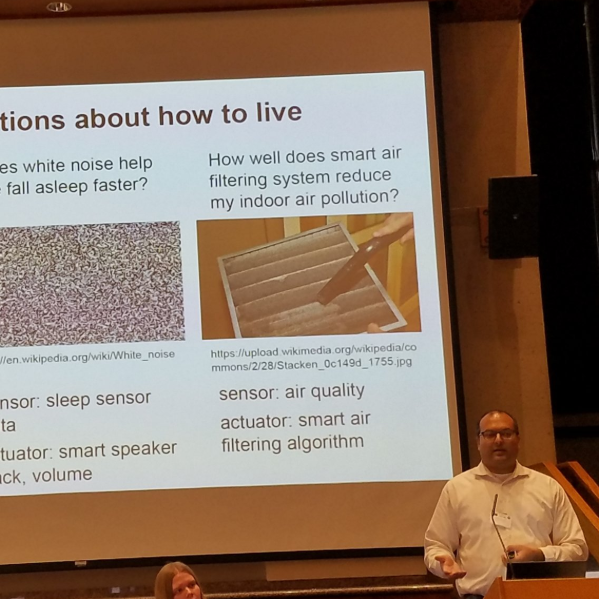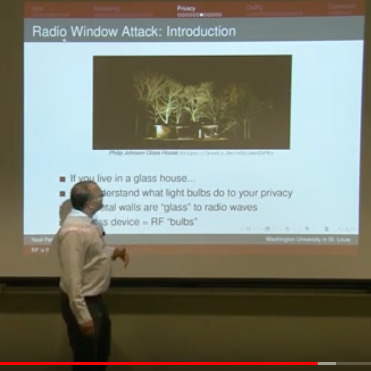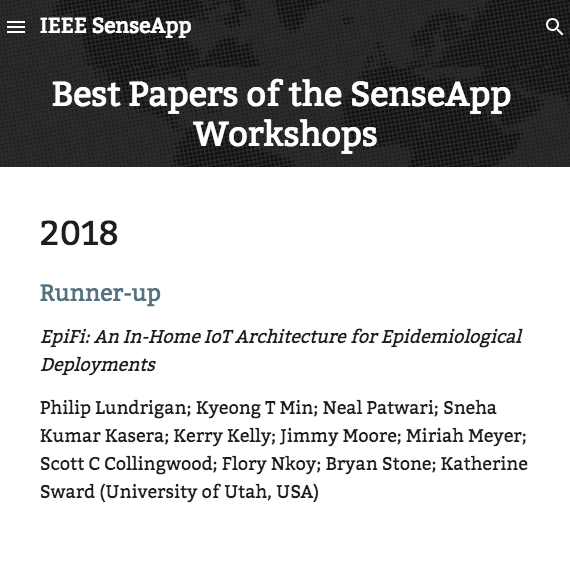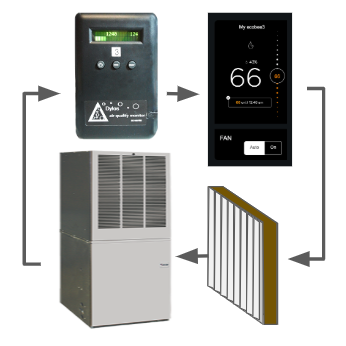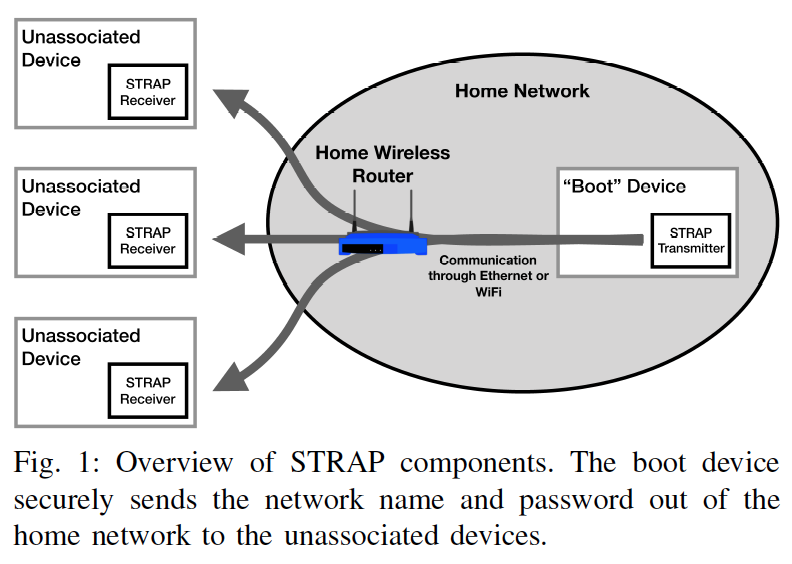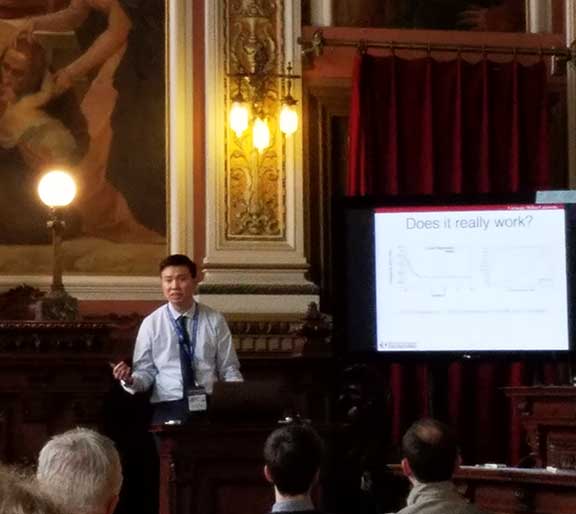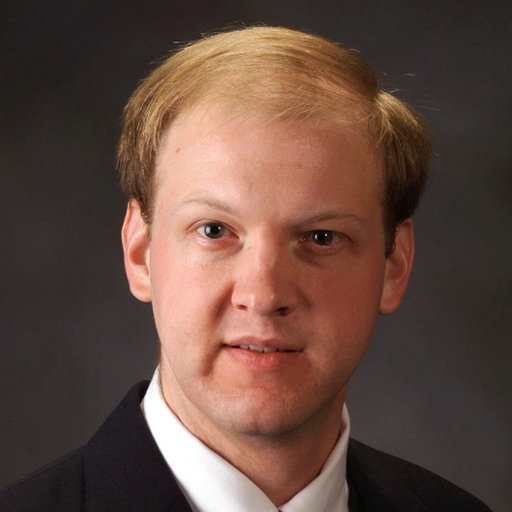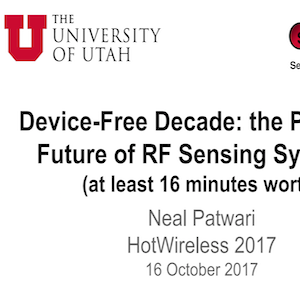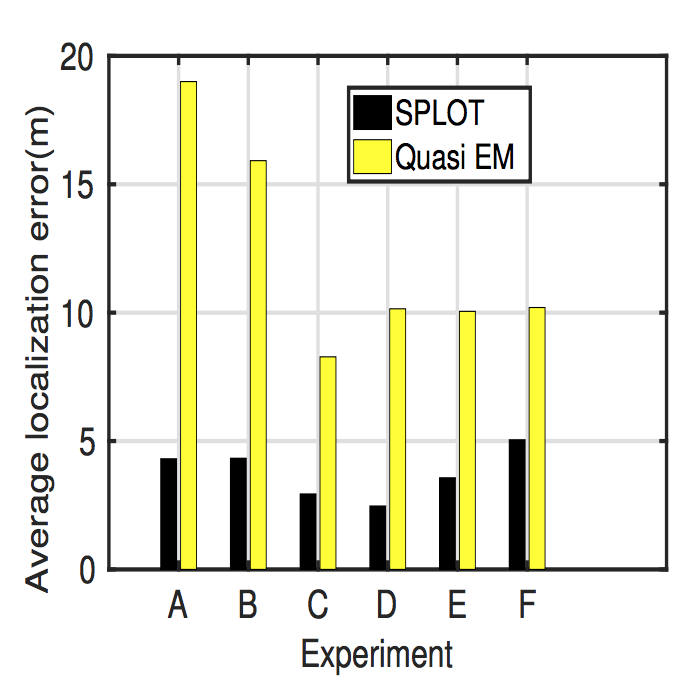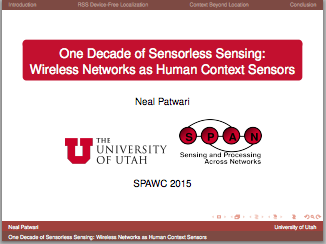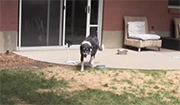SPAN Lab News
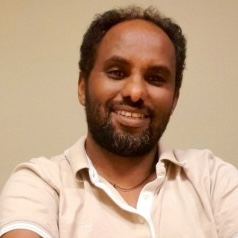
Meles PhD Defense
5 Dec 2025 --- Meles Gebreyesus Weldegebriel successfully defended his PhD dissertation, "Pseudonymetry: Real-Time Interference Management for Accountable and Cooperative Spectrum Sharing Using Embedded Watermarks". His dissertation designed, developed, and tested . The work has been deployed, extensively, on the POWDER wireless testbed. Congratulation to Dr. Jie Wang!
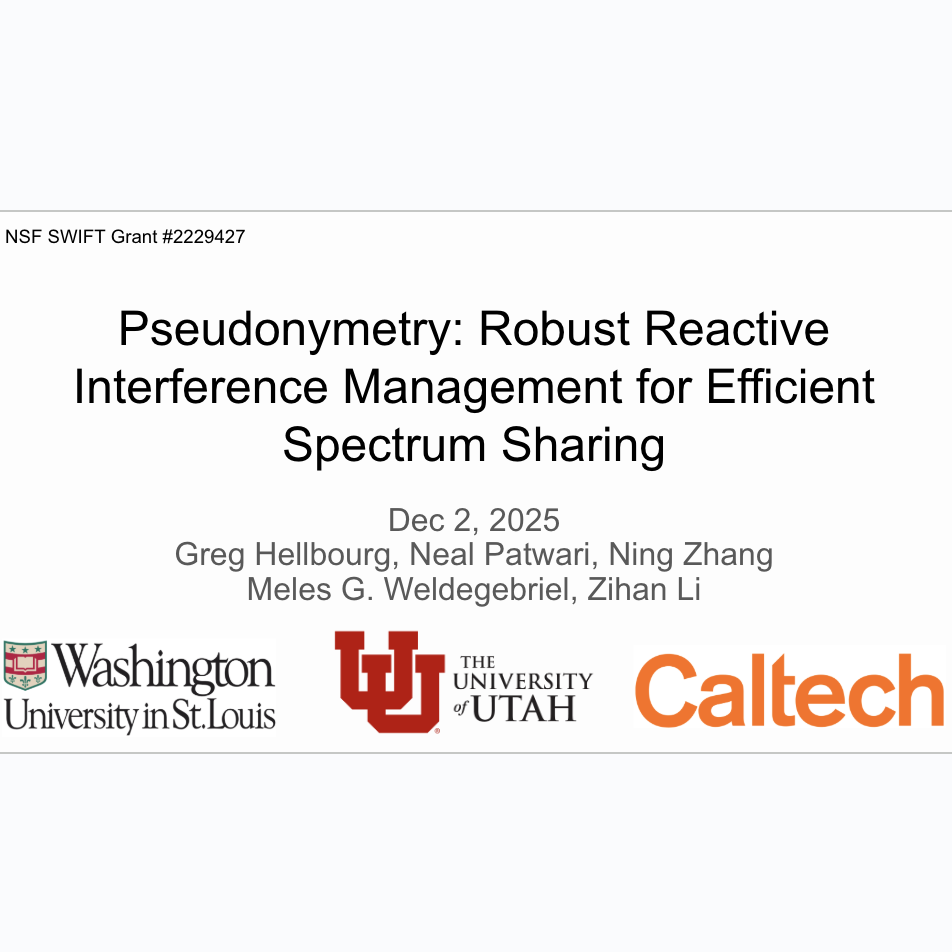
WinForum HDSS Talk
Dec 2, 2025 --- Profs. Greg Hellbourg, Neal Patwari, and Ning Zhang presented to the WinForum's Highly Dynamic Spectrum Sharing (HDSS) committee. The HDSS committee works to develop standards and specification, new technical approaches, and review of existing approaches to adaptive spectrum sharing, with the goal of expanding the efficiency of the use of the radio spectrum. The talk was titled "Pseudonymetry: Robust Reactive Interference Management for Efficient Spectrum Sharing".

Wireless Networking Systems
Thu 28 Aug 2025 --- Prof. Kobus Van der Merwe and Neal Patwari are co-teaching a new course, Wireless Networking Systems, this Fall 2025. This is a combined CS/ECE and combined undergraduate/graduate level course that provides a cross-disciplinary perspective on the design of state-of-the-art wireless networking systems. Topics range from the physical analog multipath radio propagation channel, to the antenna, to digital modulation and data rate, to multi-user multiplexing, to the higher networking layers. 5G cellular networking protocols will be studied in depth. Spectrum sharing systems such as CBRS and RDZ will be introduced. Topics will be covered both via lecture and via experimentation on POWDER. Students work in interdisciplinary teams to set up, configure, execute, and modify wireless networking experiments.
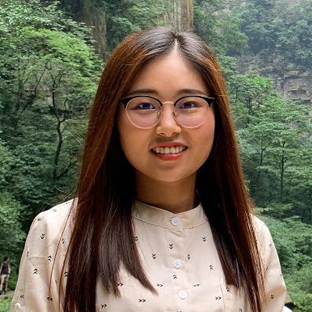
Jie Wang PhD Defense
20 March 2025 --- Jie Wang successfully defended her PhD dissertation, Interference management for next-generation dynamic spectrum sharing. Her dissertation developed multiple contributions to dynamic spectrum sharing, including new monitoring technologies for shared base stations, and new ML methods for radio channel path loss models that learn from measurements over time in the environment of a network's deployment. The work has been deployed, extensively, on the POWDER wireless testbed. Congratulation to Dr. Jie Wang!

SPAN Lab now in Utah
Fri 1 Aug 2024 --- The SPAN Lab is back in Utah! Neal Patwari is now appointed as a Profesor in the Kahlert School of Computing with a secondary appointment in the Department of Electrical and Computer Engineering. The SPAN lab website has moved to https://patwarilab.com/.
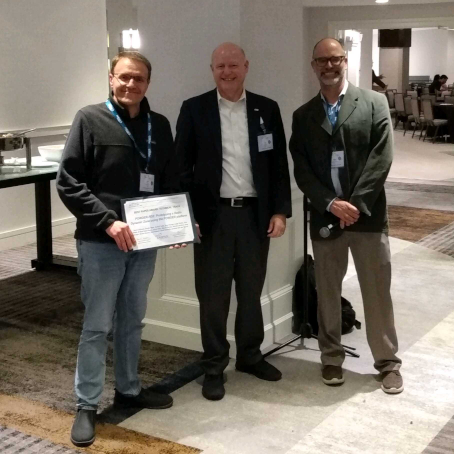
DySPAN Best Paper Award
Thu 16 May 2024 --- Congratulations to David Johnson and co-authors of "POWDER-RDZ: Prototyping a radio dynamic zone using the POWDER platform", which received the Best Paper Award: Technical Track at IEEE International Symposium on Dynamic Spectrum Access Networks (DySPAN) 2024, on May 15, 2024. The full author list for the paper is: David M. Johnson, Dustin Maas, Serhat Tadik, Alex Orange, Leigh Stoller, Kirk Webb, Muhammad Basit Iqbal Awan, Jacob Bills, Miguel Gomez, Aarushi Sarbhai, Gregory D. Durgin, Sneha Kumar Kasera, Neal Patwari, David Schurig and Jacobus E. Van der Merwe.

Papers at DySPAN 2024
Fri 29 March 2024 --- The DySPAN 2024 conference released their program online. SPAN Lab researchers are co-authors of six accepted papers! These will be presented at the conference, 14-16 May, 2024. Check out our papers page for more information, but here are the papers:
- Frost B. Mitchell, Jie Wang, Sneha K. Kasera and Aditya Bhaskara, "Utilizing confidence in localization predictions for improved spectrum management"
- Frost B. Mitchell, Jie Wang, Neal Patwari and Aditya Bhaskara, "Less is more: Improved path loss prediction using simple interpolation models"
- Jie Wang, Jonathan Gornet, Alex Orange, Leigh Stoller, Gary T. Wong, Jacobus E. Van der Merwe, Sneha Kumar Kasera and Neal Patwari, "Two measure is two know: Calibration-free full duplex monitoring for software radio platforms"
- Jie Wang, Meles G. Weldegebriel and Neal Patwari, "Channel estimation via loss field: Accurate site-trained modeling for shadowing prediction"
- Aarushi Sarbhai, Frost B. Mitchell, Sneha Kumar Kasera, Aditya Bhaskara, Jacobus E. Van der Merwe and Neal Patwari, "Reactive spectrum sharing with radio dynamic zones"
- David M. Johnson, Dustin Maas, Serhat Tadik, Alex Orange, Leigh Stoller, Kirk Webb, Muhammad Basit Iqbal Awan, Jacob Bills, Miguel Gomez, Aarushi Sarbhai, Gregory D. Durgin, Sneha Kumar Kasera, Neal Patwari, David Schurig and Jacobus E. Van der Merwe, "POWDER-RDZ: Prototyping a radio dynamic zone using the POWDER platform"
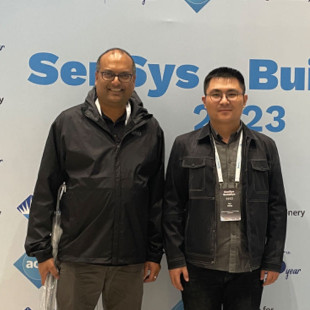
SenSys2023 in Istanbul
Mon 13 Nov 2023 --- At SenSys 2023, Neal got to meet Tao Wang, a PhD student at HIT-Shenzen who is advised by Prof. Yang Zhao, who received his PhD advised by Neal in the SPAN Lab a decade ago. Neal was at SenSys 2023 as part of serving as SenSys PC Co-chair (with Polly Huang, NTU).
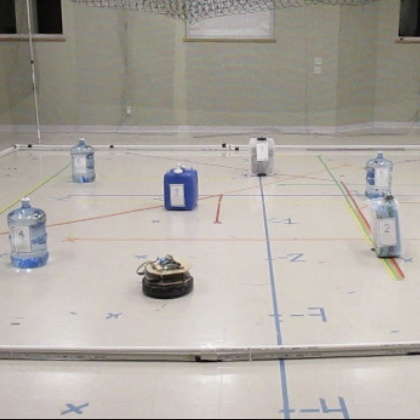
Collision Prediction Paper
Mon, 27 Aug 2023 --- On August 26, a paper by Aarti Singh and Neal Patwari, Online learning for dynamic impending collision prediction using FMCW radar, appeared online in the ACM Transactions on the Internet of Things. The paper proposes and tests an online learning algorithm to convert frequency-modulatated carrier wave (FMCW) radar and inertial measurements to a prediction of an impending collision. Inertial measurements are used to label collitions after they happen and automatically label data for future model improvements. The methods could allow future smart helmets, like used for American football, to react to collisions before they happen, and thus reduce the severity of the impact.

Jeng MS Defense
Fri, 4 Aug 2023 --- On August 4, Cassie Jeng presented and successfully defended her Master's thesis! The thesis, "WATCH: A Distributed Clock Time Offset Estimation Tool on the Platform for Open Wireless Data-Driven Experimental Research", describes her work to build a now publicly available tool, WATCH, to diagnose timing errors on distributed software-defined radio platforms. The work was tested on, and has helped to detect and solve timing issues, on POWDER. Congratulation to Cassie on her successful defense!
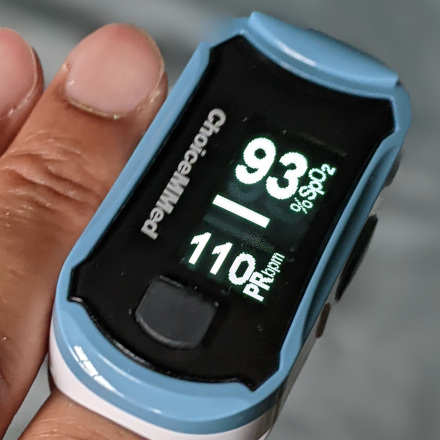
Bias talk at CHASE
Thu, 22 June 2023 --- Our "Racial disparities in pulse oximetry can't be fixed with race-based correction" paper is being presented at the 8th IEEE/ACM International Conference on Connected Health: Applications, Systems and Engineering Technologies (CHASE 2023) conference on June 23, 2023. The paper uses a large data set of pulse oximeter (SpO2) measurements and (ground truth) lab arterial oxygenation measurements to evaluate the error variance of SpO2 as a function of patient racial group. The data shows that error variance is significantly higher for patients racialized as Black and Asian, and the paper discusses potential reasons for this higher variance. Researchers have suggested race-based correction of SpO2, i.e., subtracting their known bias as a function of race. But our paper shows that this is not sufficient to close the gap in the performance of detecting hypoxemia from SpO2 measurements. Please see our published CHASE paper, our video presentation, our analysis code, and the engineering school's news release for more.
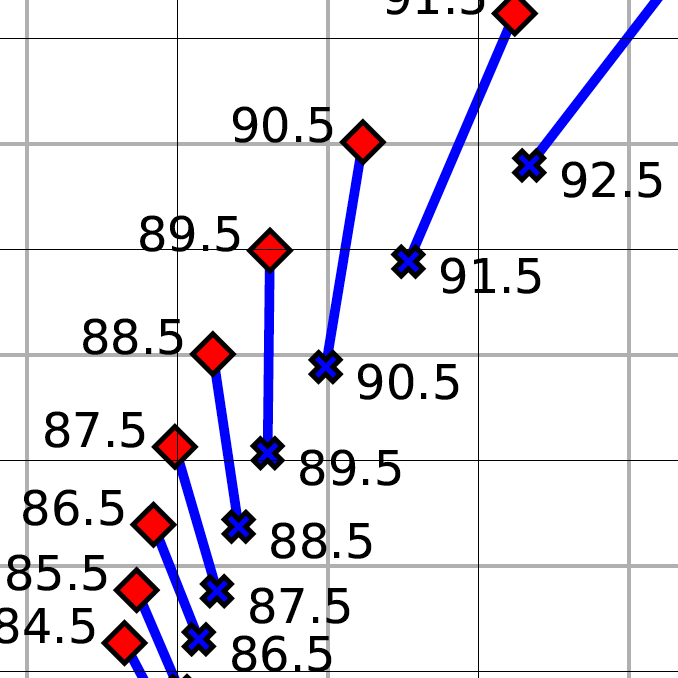
Pulse Ox Disparities
Thu, 13 Oct 2022 --- Announcing "Racial disparities in pulse oximetry can't be fixed with race-based correction", a new paper co-authored by Neal Patwari, Di Huang, and Kiki Bonetta-Misteli! It is posted on arXiv today. We followed the famous Sjoding et al. paper on Racial bias in pulse oximetry measurement, and used the eICU database to evaluate hypoxemia detection disparities. There are disparities in pulse ox measurement variance and distribution shape, which lead any realistic hypoxemia detector to have discriminatory results. To be clear, the cause of this difference - not fixing the design of the pulse ox in the more than 25 years since the disparity was first published - is racism. We argue for fixing the pulse oximeter, not a correction factor.
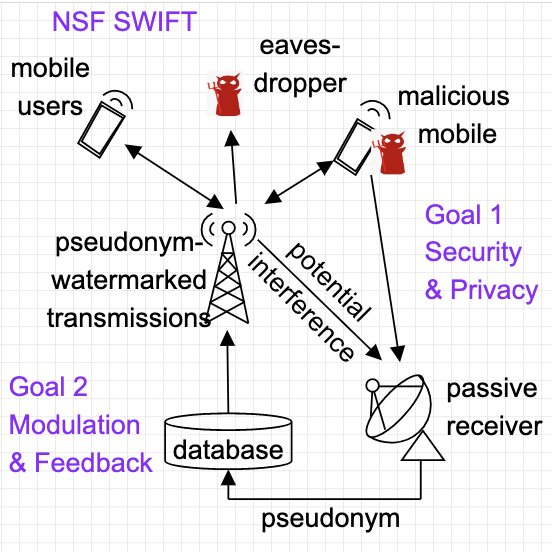
Grants for Spectrum Research
Thu, 8 Sept 2022 --- Happy to announce two new research grants on the topic of spectrum sharing at WashU in the SPAN Lab! First, Greg Hellbourg (Caltech), Ning Zhang (WashU) and Neal Patwari have been awarded an NSF SWIFT grant on “Closing the Loop for Accountable Interference-free Spectrum Sharing with Passive Radio Receivers”. We’ll be working on methods to share spectrum reliably when some of the users are passive radio users, like radio telescopes, by providing new feedback & accountability mechanisms. Secondly, we found out that the POWDER team, led by Kobus Van der Merwe (U. of Utah), several other investigators at the University of Utah, and Gregory Durgin (Ga Tech) and Neal Patwari, have been awarded an NSF "SII-NRDZ" grant called "POWDER-RDZ - Spectrum sharing in the POWDER platform". This award will build tools to build a "radio dynamic zone" (RDZ) in Salt Lake City Utah and test new measurement and modeling technologies that can protect spectrum users outside of the zone from interfering signals originating inside of the zone. We're looking forward to conducting the research on these new awards!
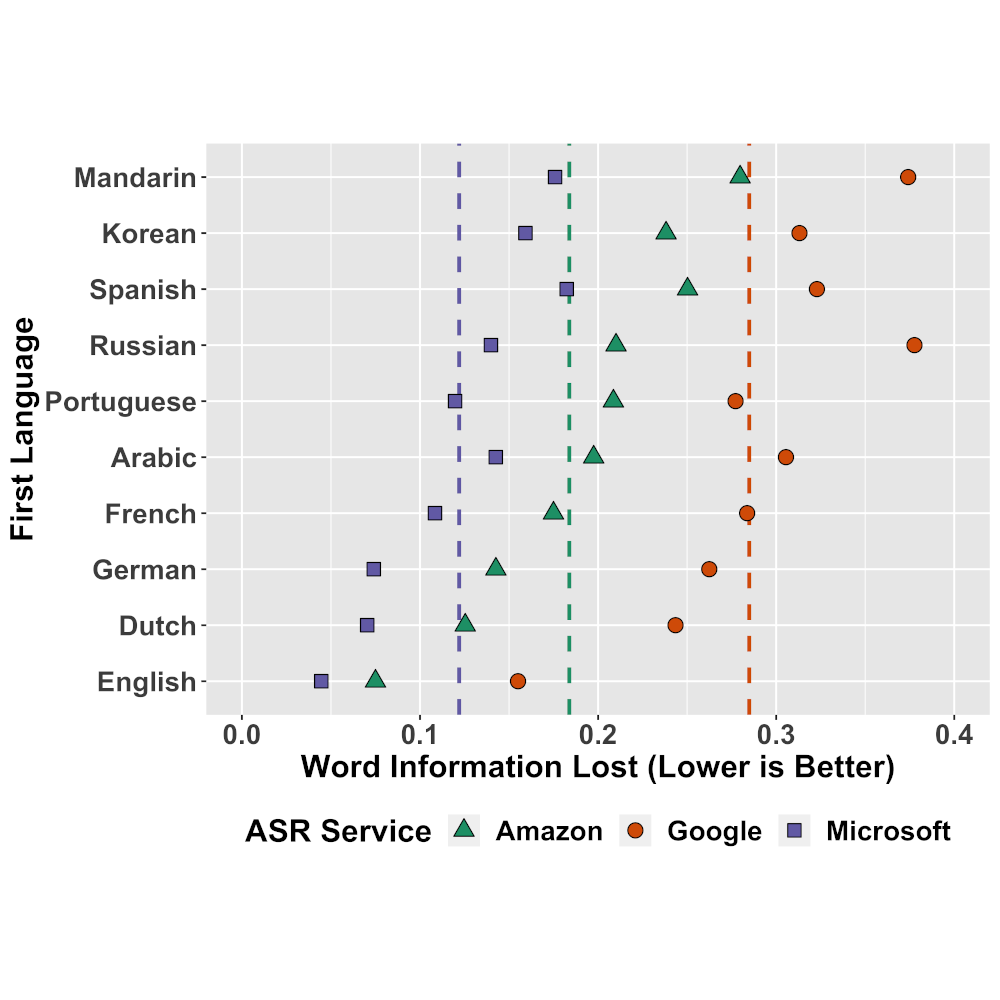
ASR Bias Paper
Wed, 4 Aug 2022 --- We have posted our work that quantifies nationality bias in English-language automatic speech recognition (ASR) services from Amazon, Google, and Microsoft. One would hope that English-language ASR services would perform equally for the many Englishes spoken around the world. But as we show, popular ASR services perform best on English spoken by people born in the US. Moreover, ASR performance is better for people born in nations aligned with US geopolitical power. We show that, even controlling for multiple covariates (English as a first language, speaker born in the US, first language in Germanic family, age of onset, sex), English speakers not born in a NATO country experience significantly worse performance from major ASR services. The implication is that people with equal experience speaking English are going to have different abilities of accessing ASR-based services (e.g., voice control of "smart" devices, automatic transcription) based purely on where they were born. Alex DiChristofano (in the Computational & Data Sciences PhD program), started this work as a class project in "Equity and Fairness in Estimation and Classification" (CSE 544A), and continued to develop the work into this paper.
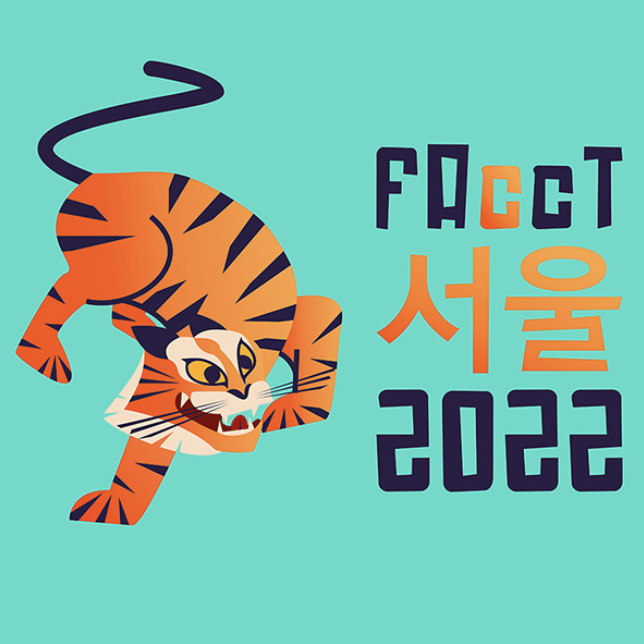
FAccT 2022 Paper
Wed, 23 July 2022 --- Why have inequities persisted for so long, despite years of activism, education, policy changes, and society’s stated values of equity and non-discrimination? The answer, in our view, is rooted in the phenomenon of feedback. In every system in which inequity persists over time, there are feedback mechanisms which enable it to survive. Our paper argues that feedback modeling tools from systems theory are helpful in quantitatively modeling mechanisms of feedback: proportional, integral, and derivative (PID), that help perpetuate or combat inequity. We give several examples of each of these PID types of feedback in societal systems of inequity. Using this framework, we present a mathematical model to help quantify the impact of these types of feedback in real-world systems. We also explore how this model can be used to inform policies to generate equity and combat historical injustice. Progress is not inevitable and the impacts of injustice do not simply disappear. We hope that with good models and with better people, we can work to make fairness last for everyone. Our FAccT 2022 paper: Models for understanding and quantifying feedback in societal systems, is being presented by Lydia Reader at The 2022 ACM Conference on Fairness, Accountability, and Transparency (ACM FAccT 2022), on Friday, June 23, in Seoul. This paper is a collaboration, including authors: Lydia Reader, Pegah Nokhiz, Cathleen Power, Neal Patwari, Suresh Venkatasubramanian, and Sorelle Friedler.
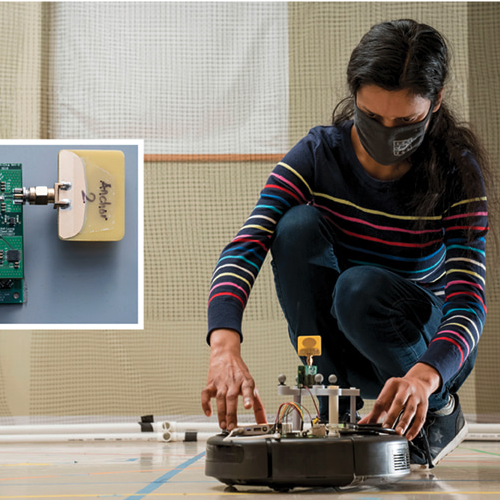
Singh ICAS presentation
Wed, 11 Aug 2021 --- Aarti Singh presents her recent experimental results using ultra-wideband and accelleration measurements for collision prediction at the IEEE 1st International Conference on Autonomous Systems (ICAS’21). Her paper is titled Collision Prediction using UWB and Inertial Sensing: Experimental Evaluation, and she presents on Wed 11 Aug 2021 in the 16:40-18:20 (Eastern time) Session SS2, Advanced Navigation for Networked AS. Congrats to her on her new experimental results showing improved performance!
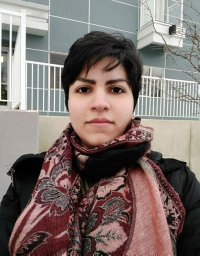
Nokhiz AIES Presentation
Thu, 20 May 2021 --- A new paper, authored by Pegah Nokhiz, is being presented at AIES 2021 on "Precarity: modeling the long-term effects of compounded decisions on individual instability" co-authored by Aravinda Kanchana Ruwanpathirana, Neal Patwari and Suresh Venkatasubramanian. Pegah Nokhiz's presentation (recorded version) was Thursday 20 May 2021 at 5:30pm CT.

Sensors, sensors everywhere
Thu, 13 May 2021 --- The SPAN Lab is featured in the McKelvey School of Engineering's Engineering Momentum Magazine in a story called Sensors, sensors everywhere. Thanks to Beth Miller for reporting on our lab's research.
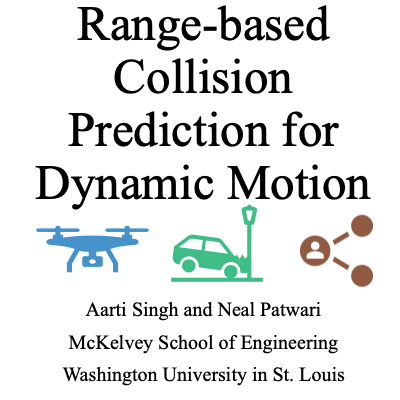
New Collision Prediction Paper
Tue, 1 Jan 2021 --- Congrats to Aarti Singh for her presentation at IEEE Robocom 2021 on January 9, 2021. Her paper, Range-based Collision Prediction for Dynamic Motion, presents results on a new algorithm for collision prediction that uses the measured accelleration in order to achieve higher robustness to highly dynamic motion.
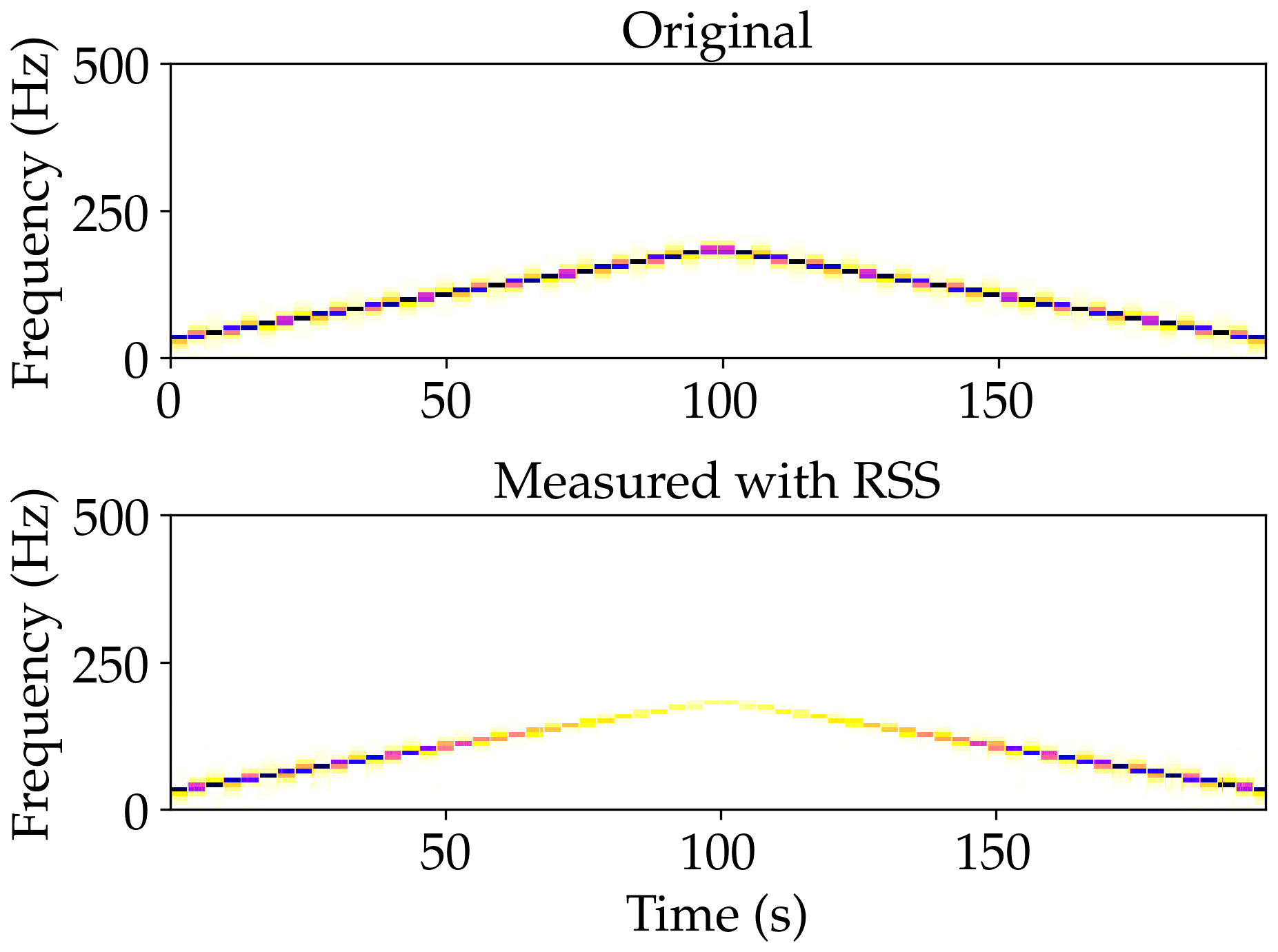
RX Power Eavesdropping
Tue, 22 Dec 2020 --- We're announcing today our work (led by Dr. Alemayehu Solomon Abrar) to expose just how well an adversary could eavesdrop if they have access to a wireless device near you. Prior work [Wei 2015] has shown that WiFi receivers can be used to eavesdrop on audio through walls using measurements of channel state information (CSI). This can be a huge threat to privacy because a WiFi interface, not a microphone or other sensor, can be used to record audio. It was believed that this was limited to WiFi because of its access to CSI measurements across multiple antennas, essentially hundreds of dimensions of data on the vibrations at each received WiFi packet. As we had suspected, even a single antenna single channel receiver that only measures quantized dB received power can be used to eavesdrop. People assume that the quantization provides a level of security, because power is typically quantized to the nearest 1 dB, which is much (~100x) bigger than the changes caused by audio vibrations. However, it is known that extra noise can sometimes help with estimation. Dr. Abrar showed that this is a feasible for an attacker: add noise via interfering transmitters, and then improve the estimates of the amplitude and frequency of the sound. His work, Quantifying Interference-Assisted Signal Strength Surveillance of Sound Vibrations, which has now appeared in the IEEE Transactions on Information Forensics and Security, goes beyond demonstrating this attack to bound an interferer's capabilities, allowing the designer of the transceiver IC to limit the the quantization and frequency of received power measurements so that an eavesdropper could have little success. We hope that by limiting availability to the measurement we can disable this potential for eavesdropping.
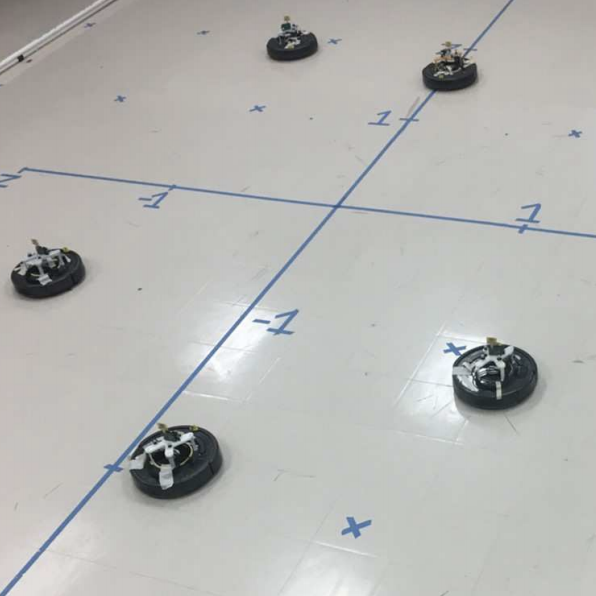
FACT paper posted
Thu, 12 Oct 2020 --- We've just posted on arXiv a pre-print of work by Dr. Alemayehu Solomon Abrar on the FACT collision prediction system, with which we enable a distributed group of mobile nodes to predict an impending collision without any anchors (known location nodes), purely using their recent ultra-wideband range measurements between themselves. Besides enabling a simpler deployment, we show both theoretically and experimentally that the anchor-free distributed algorithm can outperform both coordinate-based and pairwise collision prediction methods.
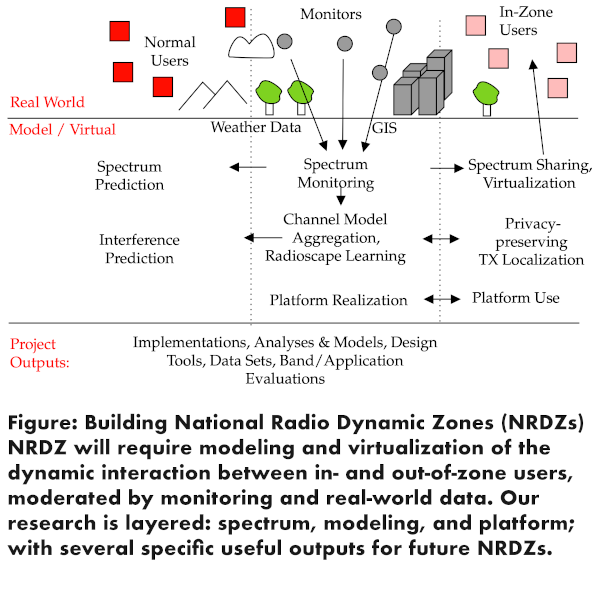
NRDZ Grant Awarded
Thu, 3 Sept 2020 --- We are happy to announce that we'll be working on a new funded project from the NSF called "Using the POWDER Platform to Explore the Feasibility of NRDZs". We will be developing technologies to enable future national radio dynamic zones (NRDZs). These NRDZs could enable more dynamic spectrum assignment in particular geographical areas, and spur faster implementation of new wireless technologies and services. Our project will develop technologies to enable such zones with monitoring, measurement, and modeling systems which ensure that the new spectrum use in the NRDZ doesn't interfere with other systems outside of the NRDZ. We will be collaborating with Kobus Van der Merwe, Sneha K. Kasera, and Aditya Bhaskara at the University of Utah, and Gregory D. Durgin at Georgia Tech.
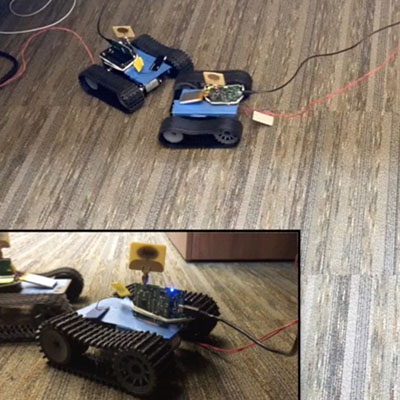
Demo Video Posted
Wed, 22 April 2020 --- Jonathan Decavel-Bueff and Alemayehu Solomon Abrar have created a video demonstration of their collision prediction system. The system uses pairwise ultra-wideband (UWB) measurements to repeatedly measure the range between the two objects. The method extrapolates a few 100 ms into the future based on a parabolic fit of the squared distance over time. If the extrapolation shows the two will soon be within a threshold distance of each other, it detects an impending collision. More detail is available in the abstract. In the video, the microcontroller turns on an LED. This demo is part of the IPSN 2020 poster and demo session. Congrats to Jonathan and Alemayehu for their completed project.
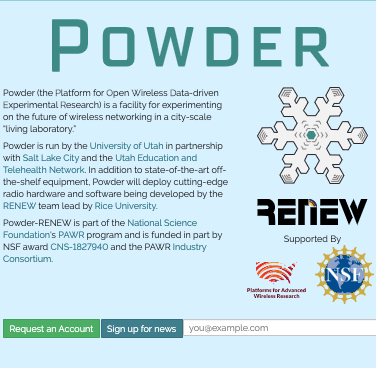
Powder REU Projects
Wed, 26 Feb 2020 --- We are recruiting undergraduate researchers to participate in an NSF-funded Research Experience for Undergraduates (REU) project during Summer 2020 at Washington University in St. Louis. There are two paid full-time REU positions this summer, both working to develop tools for the Powder wireless platform. Powder enables repeatable experimentation to a degree that has been previously unattainable by researchers. However, wireless performance is also a function of the real world, for example, weather, season, interference from other wireless systems, exact position of mobile devices, and clock differences at the particular time at which an experiment is run. Thus another researcher may see different results than the original research.
These REU projects will capture meta-data about the conditions of the Powder platform, the devices in the network, and the environment in which an experiment is run, in order to provide a means to be able to debug, after the fact, how different the experimental conditions were compared to those recorded during a prior experiment. We will develop software tools that can be included in experiments with little set up or overhead from the user. These tools will be designed to collect metadata, save the metadata, and to compare and visualize the differences between two sets of metadata. Three categories of these metadata are:
- Time / clock synchronization: capturing changes in clock offsets between different SDRs in the network
- Interference power: capturing changes in the noise plus interference power observed at receivers in the network
- Channel changes: sounding the radio channel using devices alternately as transmitters and receivers to monitor the radio channel for changes in received power that might be attributed to changes in the environment or weather
The REU projects will pick some metadata to monitor, determine ways of capturing it during, before and after experiments, and write and test the software tools. For some of these objectives, we will need to come up with creative ways to accurately capture this data to meet the constraints and limitations of the system.
Monitoring such metadata with these tools and observing its impact on other research, is a particularly interesting avenue of research that may lead to publication. Thus writing about the results of the project is also an important task for the REU.
The Powder platform is physically deployed in Salt Lake City, Utah, and we will be working with collaborators and other REU students at the University of Utah and at Rice University. The internship may include one week-long trip to Salt Lake City for in-person work and tutorials at the University of Utah; if so travel expenses will be paid from the REU funding.
REU participants will be developing software in Python. Other skills of use are: radio wave propagation, statistical signal processing, software radio (particularly GNU Radio), general Linux familiarity.
To apply, send your CV/resume, transcript, and the names and email addresses of two references to Neal Patwari, first initial lastname @wustl.edu.
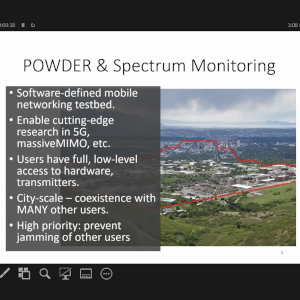
Boston Terry MS Thesis
Tue, 25 Feb 2020 --- Congratulations to Boston Terry, who defended his MS thesis, "Spectrum monitoring and source separation"! His work developed tools and experimental results for monitoring transmissions from software–defined radios in the Powder platform for violations of spectrum rules, in the presence of other interference which could be mistaken for transmission violation. We'll post the final version of the thesis soon.
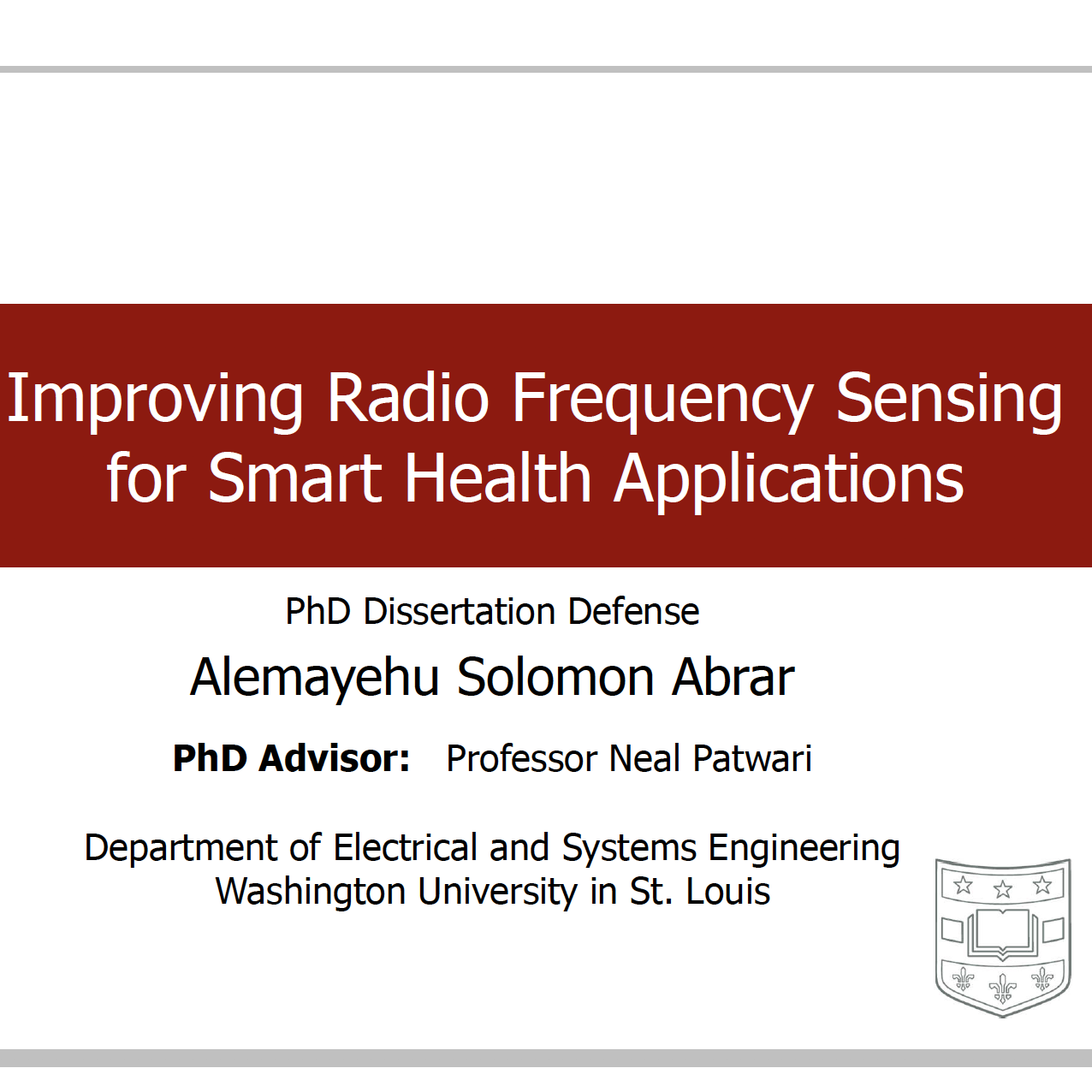
Alemayehu Defends
Fri, 10 Jan 2020 --- Congratulations to Alemayehu Solomon Abrar, who successfully defended his PhD dissertation, "Improving Radio Frequency Sensing for Smart Health Applications", on Friday 10 January at Washington University in St. Louis. His work made significant contributions to narrowband RF sensing, to the study of privacy from RF sensing, and in the improvement of the prediction of collisions between autonomous agents using ultra-wideband radar measurements. We congratulate Dr. Alemayehu Solomon Abrar for his success!
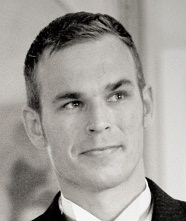
Ossi Kaltiokallio Seminar
Tue, 8 Jan 2020 --- Ossi Kaltiokallio will give a seminar at the ESE Department on Thursday 9 January, 2020, at 9am in the Rodin Auditorium.
Title: RF Sensing and Device-free Localization for Aging in Place
Seminar Abstract: In developed nations, the demographic change in the population is creating many challenges both from a societal and an economic standpoint. Research into aging, age-related conditions, and the means to support an aging population has therefore become a priority for many governments around the world. The aim is to develop both preventive and monitoring systems for aging well at home, in the community, and at work. Radio frequency (RF) sensing is particularly suitable for realizing such monitoring systems because the technology is passive and does not require users to carry obtrusive and uncomfortable sensors, and the technology is suitable for a wide range of monitoring purposes. The focus of this talk is on received signal strength-based device-free localization, which is a subtopic of RF sensing.
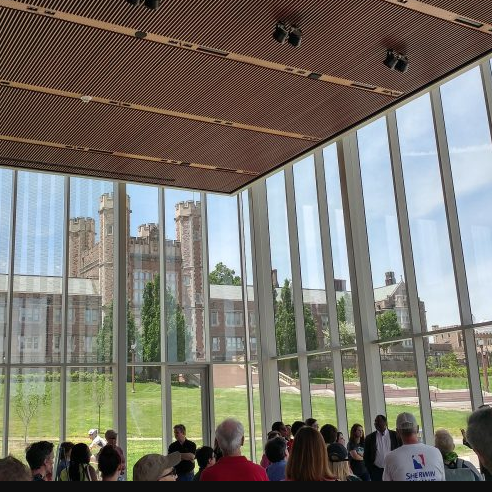
Look at WashU for your PhD
Mon, 11 Nov 2019 --- Future PhD Students:
We'd like you consider Washington University in St. Louis for your PhD. Our Electrical and Systems Engineering department has two PhD programs, one in Electrical Engineering, and one in Systems Science & Mathematics.
Our department has a long history -- we are the 2nd oldest department of Electrical Engineering in the US. Our faculty have research specialties in applied physics, in devices & circuits, in system science, and in signals & imaging. As one of the few ESE departments, we have a unique perspective that is focused on data and sensing systems and their design, analysis and control. Our research has dramatic impact and solves real-world problems.
As a PhD student in ESE, you would be fully funded, including full tuition support, health insurance, and stipend to cover living expenses, which is guaranteed as you continue to make satisfactory progress towards your degree. Washington University is located in St. Louis, a livable, walkable, historic city with great nearby arts, dining, nightlife, and entertainment options.
When you finish your PhD, you'll join the distinguished ranks of the alumni of Washington University. We produce alumni who start companies, become leading industry researchers, and professors across the nation and world.
Start today by applying to ESE in the McKelvey School of Engineering at Washington University in St. Louis. We'll look forward to working with you!

Lundrigan Talk at MobiCom
Wed, 22 Oct 2019 --- Philip Lundrigan presents his work on On-Off Noise Power (ONPC) Communications at the 25th Annual International Conference on Mobile Computing and Networking (MobiCom 2019) in Los Cabos, Mexico. His work shows how we can add a longer range, low rate communication protocol to standard WiFi devices via a change in software. His work has been picked up and reported by Engadget, London's The Inquirer, Tom's Hardware, and Digital Trends.

Keynote at IPIN 2019
Wed, 2 Oct 2019 --- Neal Patwari presented a keynote lecture, RF is the new light: sensing, localization, and privacy at the 10th Intl. Conf. on Indoor Positioning and Indoor Navigation (IPIN 2019) in Pisa, Italy. His talk slides are now available.
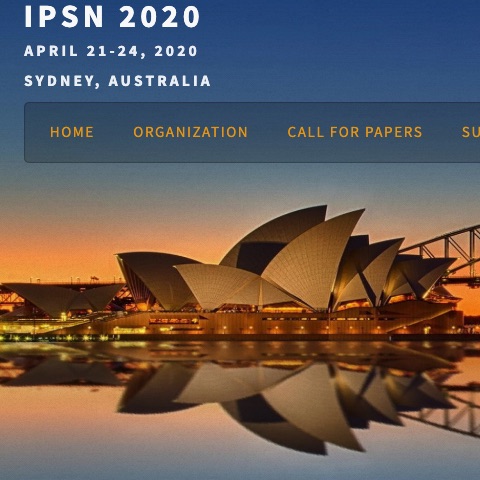
Submit to IPSN 2020
Fri, 13 Sep 2019 --- Please consider submitting to IPSN 2020, the best place to send your research in networked sensing and control. IPSN traditionally accepts papers that cross disciplinary boundaries, and this year will be no exception. IPSN continues to be located with CPS-IoT Week, which is in Sydney Australia 21-24 April 2020. The submission requires a paper abstract registration due 16 Oct 2019, and the full paper submission due a week later. Please submit your best work to IPSN 2020!

Tutorial at MWW2019
Tue, 10 Sep 2019 --- Neal Patwari and Syed Ayaz Mahmud presented a day-long tutorial as part of Mobile and Wireless Week 2019, a week-long tutorial on the POWDER-RENEW wireless research platform in Salt Lake City, Utah. The tutorial covered using GNU Radio to transmit and receive over the air RF signals on the deployed software defined radios. Currently, base stations and fixed endpoints are deployed across the University of Utah campus. Researchers can apply for an account and then log into compute nodes and run experiments over the air. In one exercise, attendees made path loss measurements and plotted them vs. distance. Tutorial instructions and videos will be posted soon.
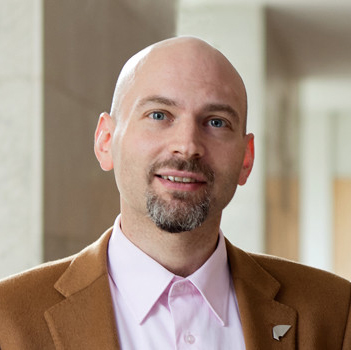
5G Localization Seminar
Wed, 13 May 2019 --- Riku Jäntti returns to the SPAN Lab on 13 May 2019. He will present a seminar on 'Localization in 5G Ultra–Dense Networks', 3-4 pm on Monday May 13, in Brauer Hall, Room 12. He is is a Full Professor of Communications Engineering and the head of the department of Communications and Networking at Aalto University School of Electrical Engineering, Finland. He received his M.Sc (with distinction) in Electrical Engineering in 1997 and D.Sc (with distinction) in Automation and Systems Technology in 2001, both from Helsinki University of Technology (TKK). Prior to joining Aalto (formerly known as TKK) in August 2006, he was professor pro tem at the Department of Computer Science, University of Vaasa. Prof. Jäntti is a senior member of IEEE and associate editor of IEEE Transactions on Vehicular Technology. He was also IEEE VTS Distinguished Lecturer (Class 2016). The research interests of Prof. Jäntti include radio resource control and optimization for machine type communications, Cloud-based Radio Access Networks, spectrum and co-existence management, and quantum communications. Prof. Jäntti's talk has the following abstract: Cellular systems are undergoing a transformation towards the fifth generation (5G). Envisioned applications in 5G include intelligent transport system (ITS), autonomous vehicles and robots as part of future roads, factories and society. These applications rely to a great extent on accurate and timely location information of connected devices. This talk proposes a practical scheme for acquiring precise and timely position information by means of a user–centric ultra–dense network (UDN) architecture based on an edge cloud. The considered solution consists of estimating and tracking the azimuth angle–of–arrival (AoA) of the line–of–sight (LoS)–path between a device and multiple transmission–reception points (TRPs), each having a uniform linear antenna array (ULA). AoA estimates from multiple TRPs are fused into position estimates at the edge cloud to obtain timely position information. Extensive measurements have been carried out using a proof–of–concept software–defined–radio (SDR) testbed in order to experimentally assess the achievable positioning accuracy of the proposed architecture. A realistic UDN deployment scenario has been considered in which TRPs consist of antenna arrays mounted on lamp posts. Our results show that practical UDNs can provide sub–meter positioning accuracy of mobile users by employing ULAs with at least four antennas per TRP as well as by taking into account the non–idealities of the ULAs’ phase and magnitude response.
Enabling Bottom-up Research
Fri, 1 Mar 2019 --- Neal Patwari presented a talk on "Enabling bottom-up research to increase access to the benefits of smart systems" at the workshop on Social Justice and Equity in the Engineering of Smart and Connected Cities at the University of Washington, Seattle, WA, on December 11. The paper is now up. Neal argues that IoT and "smart" devices allow people to answer their own research questions on how to live their lives, by using devices to run repeated measurement randomized trials on themselves.
Seminar Video Up
Fri, 1 Feb 2019 --- Neal Patwari presented the ESE seminar at WashU on 17 January 2019. The video is now available. The title is "RF is the new Light: Monitoring and privacy in cyber-physical systems". Don't forget the popcorn!
First DFL Competition
Wed, 9 Jan 2019 --- We're excited to announce that at CPS-IoT Week 2019, we will hold the Bosch Device-Free Localization Competition! This is a first-of-its-kind event designed to allow DFL systems to be compared side by side in a single evaluation environment. While DFL has not had past competitions, device localization has been the subject of several years of competition at the IPSN conference through the Microsoft Indoor Localization Competition. Four winning teams will walk away with cash prizes. We urge researchers interested in participating to read about the competition, submit an abstract, build their DFL system, and bring it to the conference and compete!
EpiFi at SenseApp
Mon, 1 Oct 2018 --- Philip Lundrigan presented on the EpiFi system at IEEE SenseApp. EpiFi is an architecture meant to enable easier and more reliable IoT deployments for the purposes of large-scale epidemiogical studies. EpiFi is an open source set of tools freely available for download, built upon other open source tools for IoT. Philip and the EpiFi team work on an NIH-funded program called PRISMS which is meant to develop such tools for pediatric epidemiologists to study how exposure and activity are related to disease. Philip's paper won the "Runner-up" in the Best Paper competition at IEEE SenseApp 2018. Congrats to Philip and the EpiFi author team!
Diffusing SmartAir
Wed, 26 Sept 2018 --- Research led by Kyeong Min via the PRISMS project was presented at the IEEE/ACM Conf. on Connected Health: Applications, Systems and Engineering (CHASE). Our paper is both on an internet-of-things air quality automation system we call SmartAir, and new software that allows people to run randomized controlled trials on their own IoT systems in their own homes in order to test their performance. SmartAir improves home air quality by sensing the particulate matter (PM) in the air, and controlling the HVAC system fan to turn on and filter the air when the PM is high. Our paper results were picked up and reported on by the Salt Lake Tribune.
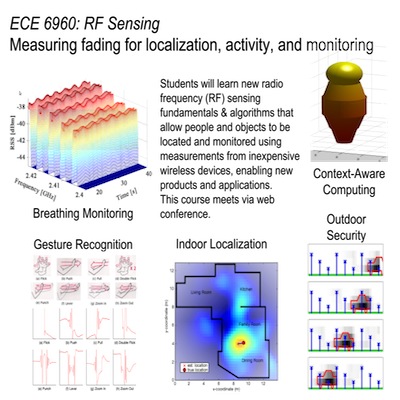
RF Sensing Course
Tue, 20 Aug 2018 --- Neal Patwari will teach a class via web conference this semester on "RF Sensing". UofU students can sign up for ECE 6960-013. Non UofU students can participate by sending an email to Neal and request enrollment. The course is Tue and Thu 12:25 - 1:45pm (MT). This course meets via web conference: https://spanlab.my.webex.com/join/neal.patwari. You will need a computer and headset to join the web conference. This course presents the state-of-the-art in using commercial wireless devices to make radio frequency (RF) channel measurements and sense the state of the environment. RF sensing is used to locate and track people in the vicinity of the RF sensors, to monitor their breathing and pulse rate, to perform gesture and activity recognition, and other applications. These are often called "device free" sensing because the person being monitored does not carry any device on them, instead, we sense the changes from static deployed wireless network. This course presents the fundamentals, the statistical models, and the algorithms used in RF sensing. Students will borrow RF sensors for the semester and implement algorithms that run in real time on the data from their sensors. We will discuss the most recent research papers in the area via web conference. Students will implement and improve RF sensing algorithms and be graded in part on their accuracy. Students will also complete and present a course project to implement or analyze a RF sensing system.
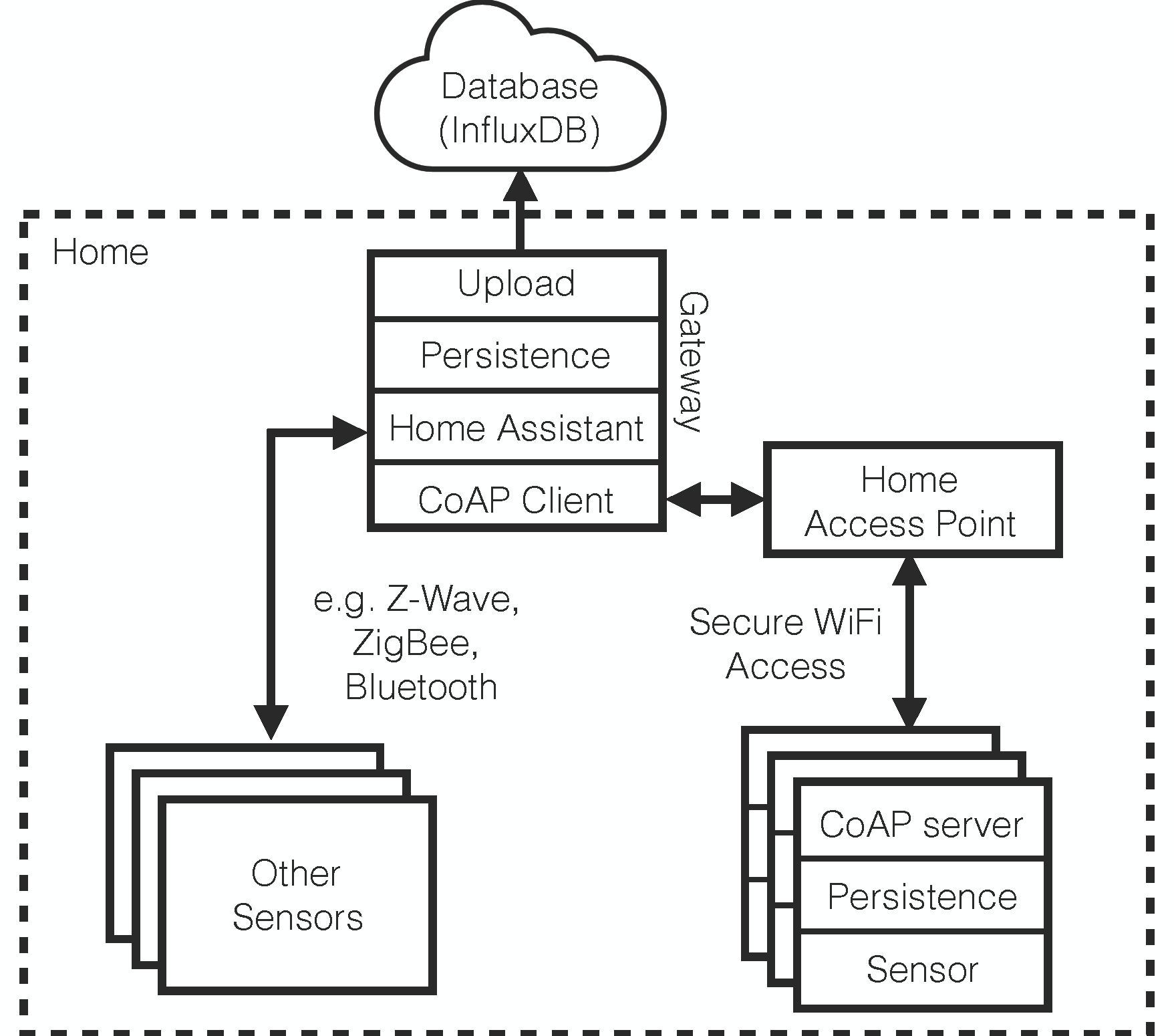
EpiFi System Presentation
Tue, 17 July 2018 --- The SPAN lab has been working as part of an interdisciplinary team across campus on the "Pediatric Research Using Integrated Sensor Monitoring" project funded by the National Institute of Biomedical Imaging and Bioengineering to develop new sensor networking tools for epidemiologists. Over the past two and a half years, we've been developing networking software, air quality sensors, and tools that aid in deployment, monitoring, and visualization, for the specific needs of epidemilogists who want to put sensors in study participants' homes to better know their exposure to air pollution and other asthma triggers. The end goal is to allow people to reduce their exposure to pollutants that might affect their long-term or immediate health. Philip Lundrigan, a PhD student at the U, has authored a paper that will be presented at the IEEE International Workshop on Practical Issues in Building Sensor Network Applications (SenseApp 2018) on 1 Oct. 2018, which discusses the EpiFi system of which he has led the development.
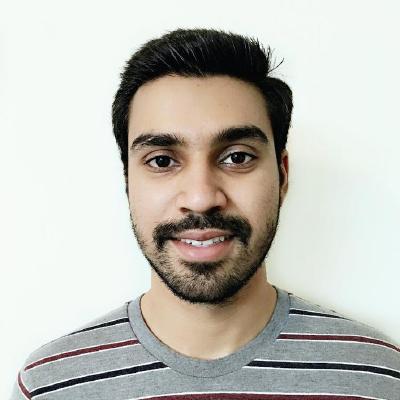
Crowdsourcing Location Privacy
Mon, 16 July 2018 --- Harsimran Singh will present his paper, "Privacy enabled crowdsourced transmitter localization using adjusted measurements", at the 2nd IEEE Symposium on Privacy-Aware Computing (IEEE PAC 2018), which is held from 26-28 September 2018 in Washington DC. Harsimran's paper, which is one of only 11 papers accepted to the symposium this year, investigates a means for devices to participate in crowdsourcing system (by providing a measurement and the location at which the measurement was recorded to a server) without giving away the user's true location.

Jäntti Seminar
Wed, 13 June 2018 --- Riku Jäntti will present a seminar on 'Ambient and Quantum Backscatter Communications', 1-2 pm on Wednesday June 13, in room MEB 2109. He is is an Associate Professor (tenured) in Communications Engineering and the head of the department of Communications and Networking at Aalto University School of Electrical Engineering, Finland. He received his M.Sc (with distinction) in Electrical Engineering in 1997 and D.Sc (with distinction) in Automation and Systems Technology in 2001, both from Helsinki University of Technology (TKK). Prior to joining Aalto (formerly known as TKK) in August 2006, he was professor pro tem at the Department of Computer Science, University of Vaasa. Prof. Jäntti is a senior member of IEEE and associate editor of IEEE Transactions on Vehicular Technology. He is also IEEE VTS Distinguished Lecturer (Class 2016). The research interests of Prof. Jäntti include radio resource control and optimization for machine type communications, Cloud based Radio Access Networks, spectrum and co-existence management, quantum communictions and RF Inference. Riku Jäntti's talk has the following abstract: Low power wireless communications has been identified as one of the key enabling technologies for the Internet of Things (IoT). The performance of the contemporary IoT connectivity solutions are mainly limited by congestion, interference, and limited operation time with battery. These limitations hampers the scaling of the IoT deployments. The first part of the talk discuss Internet of Things (IoT) connectivity solution that combines existing and emerging wireless communication systems, with a new layer of ultra-low-power or passive ambient backscatter communications (AmBC). An AmBC deice modulates the ambient signal impinging at its antenna. In contrast to traditional systems, AmBC devices do not need a power-hungry transceiver and can achieve up to 1000 times lower power consumption and 10 to 100 times lower device cost than contemporary active-transceiver-based solutions. The second part of talk, discuss the possibility of using quantum radar technology to improve the performance of backscatter communications beyond the limits of classical systems. The proposed quantum backscatter system utilizes microwave quantum illumination to improve the receiver performance. The communication device, the backscatter tag, is still a classical one. All the complexity is put on the transceiver side.
How to Boot-STRAP WiFi
Fri, 11 May 2018 --- In deployments of WiFi devices for smart home applications, the time required for passing home WiFi authentication information to each device is long and is proportional to the number of sensors being deployed. Deployers could save significant time and avoid problems with Philip Lundrigan's new secure transfer of association protocol" (STRAP), which sends authentication information to all devices simultaneously in a secure and novel manner. He will present STRAP at the 27th International Conference on Computer Communications and Networks (ICCCN 2018) on 30 July 2018 in Hangzhou China.
Luong Presents, Wins in Porto
Wed, 11 Apr 2018 --- SPAN Lab graduate Dr. Anh Luong presented two papers at the 2018 ACM / IEEE International Conference on Information Processing in Sensor Networks in Porto, Portugal. One was on his PhD work, titled A Stitch in Time and Frequency Synchronization Saves Bandwidth". The second was on his postdoctoral work at CMU, called "Charm: Exploiting Geographical Diversity Through Coherent Combining in Low-Power Wide-Area Networks", won the IPSN 2018 Best Paper Award! Congrats to Anh!
Anderson Presents at the U
Tue, 23 Jan 2018 --- Prof. Chris R. Anderson will present a seminar titled "Integrated Terrain and Clutter Propagation Modeling for 1.7 GHz Spectrum-sharing" on Friday 26 January 2018, from 3:05 - 3:55 PM in WEB 1230. His talk addresses radio propagation measurements and models for the coexistence of military communications systems and future commercial LTE operators in the 1695-2180 MHz band. Existing models were highly conservative in an effort to ensure protection of DoD systems. Chris' work is an attempt to provide more accurate models so that this band can be fully utilized.
HotWireless Invited Talk
16 Oct 2017 --- Slides from Neal Patwari's talk at HotWireless 2017, Device-Free Decade: the Past and Future of RF Sensing Systems are now posted.
MobiCom 2017 Paper Presented
16 Oct 2017 --- Shamik Sarkar presented the paper, Simultaneous Power-based Localization of Transmitters for Crowdsourced Spectrum Monitoring", at the ACM MobiCom 2017 conference, which was held in Snowbird, Utah. The paper is authored by Mojgan Khaledi, Mehrdad Khaledi, Shamik Sarkar, Sneha Kasera, Neal Patwari, Kurt Derr, and Samuel Ramirez.
SPAWC Plenary Talk Slides Posted
Thu, 13 Aug 2015 --- Neal Patwari presented the plenary talk, "One decade of sensorless sensing: Wireless networks as human context sensors", at the IEEE Signal Processing and Wireless Communications (SPAWC) conference in Stockholm, Sweden. Slides from his talk are now posted.
Piss Off! The System
Tue, 21 Jul 2015 --- Khanh Nguyen, a summer intern at the SPAN Lab, created and tested a system to water your lawn after your dog has done its business on it, to prevent future urine burn spots. You can now watch a video on her system, called "Piss Off! The System".
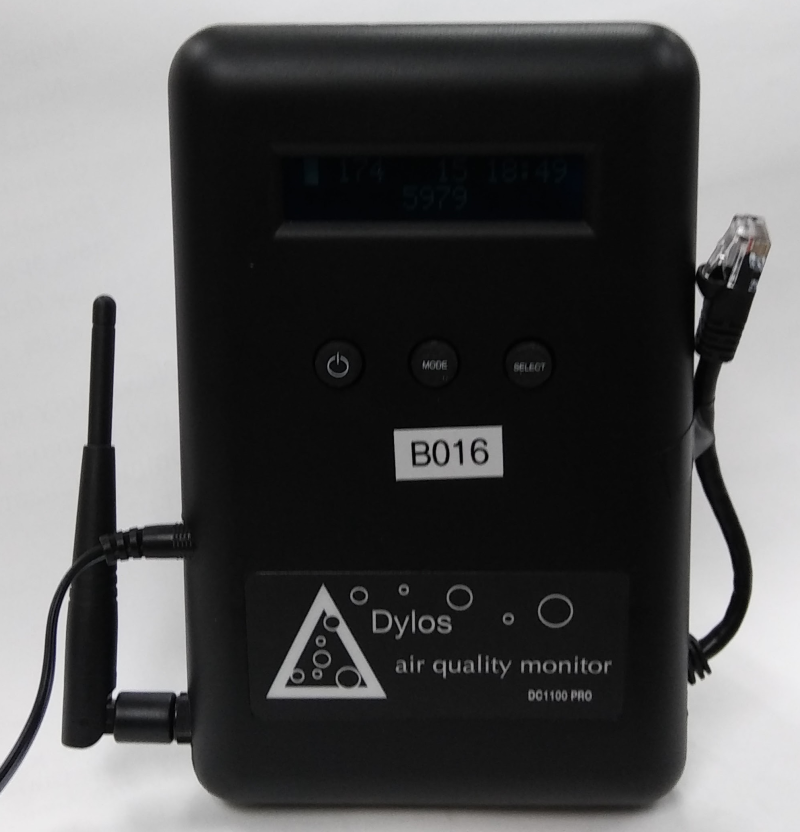
Utah Modified Dylos Sensor Wins Best in Session Award
Tue, 02 Jun 2015 --- Congratulations to Kyeong T. Min, whose poster was awarded "Best In Session" at the 2015 American Industrial Hygiene Association Conference & Expo, held here in Salt Lake City, Utah. Kyeong designed and built the "Utah Modified Dylos Sensor", an air quality sensing server and Android app which form a unified sensing, wireless interface, database, and user interface for use in human subjects air quality sensing research. The poster is titled "Development of a low-cost environmental sensor with remote real-time monitoring of indoor particulate, temperature and relative humidity", and its authors are Ben S Cryder, Darrah K Sleeth, Yue Zhang, Kyeong T Min, Chong Zhang, and Scott C Collingwood.

NSF Grant Awarded to Investigate the Science of Temporal Fading
Tue, 10 Jun 2014 --- The NSF has funded our research project "Advanced Radio Frequency (RF)-based Environmental Monitoring Systems" to be performed collaboratively at Georgia Tech and the University of Utah. Prof. Neal Patwari and the SPAN lab will conduct the research at the University of Utah, and Prof. Gregory D. Durgin and the Propagation Lab will conduct the research at Georgia Tech. The award is an investigation in the science of temporal fading as it is useful for new radio frequency (RF) environmental monitoring (REM) systems. Research in this project considers temporal fading and seeks to establish how it is affected by the movements of people in the environment so that it can be exploited for environmental monitoring.

Best Paper Award at IPSN 2014
Wed, 16 Apr 2014 --- Congratulations to Ossi Kaltiokallio, Hüseyin Yigitler, Riku Jäntti, and Neal Patwari! Their paper, "Catch a Breath: Non-invasive Respiration Rate Monitoring via Wireless Communication", was awarded the Best Paper Award at the 13th IEEE/ACM International Conference on Information Processing in Sensor Networks (IPSN 2014), held April 15-17 in Berlin, Germany. Ossi Kaltiokallio, Hüseyin Yigitler, and Riku Jäntti are affiliated with Aalto University in Espoo, Finland. Ossi was a visiting researcher in the SPAN lab in 2012.
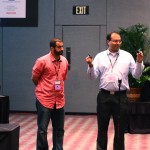
SPAN Research Featured at IEEE RFID 2014
Tue, 15 Apr 2014 --- Neal Patwari was the keynote speaker at the 2014 IEEE RFID Conference in Orlando, Florida, on April 10, 2014. He presented a talk, "Tracking Without Tags: Environmental Awareness Using RF Tomography", including a demonstration of the types of changes in signal strength experienced on a static link when a person walks through the link. The talk slides are now available.

Brad Mager presents at PIMRC 2013 on Fall Detection
Thu, 15 Aug 2013 --- Brad Mager presented his paper, "Fall Detection Using RF Sensor Networks", at the 24th Annual IEEE Symposium on Personal, Indoor, and Mobile Communications Conference (PIMRC '13) in London, on Tuesday September 3. His paper is the first presented paper in the "Event Sensing and Localization" Session at 11am - 12:40pm. His paper is co-authored by Neal Patwari and Maurizio Bocca.

Merrick McCracken presents at SECON 2013
Thu, 15 Aug 2013 --- Merrick McCracken presents his paper, Joint ultra-wideband and signal strength-based through-building tracking for tactical operations, at the 2013 IEEE Intl. Conf. on Sensing, Communications, and Networking, on Wednesday, June 26, in New Orleans. His paper, co-authored by Maurizio Bocca and Neal Patwari, explores combining ultra-wideband impulse radar with radio tomography in order to achieve accurate localization without having sensors on all sides of an area to be covered. The idea is particularly motivated by emergency response applications.
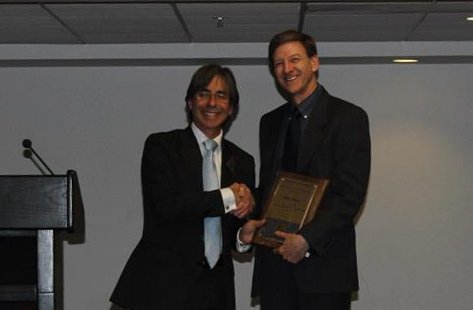
Congratulations to Brad Mager!
Mon, 15 Apr 2013 --- Brad Mager had a great night at the ECE Technical Open House Award Banquet. He was awarded "Outstanding Computer Engineering Student", and also awarded one of six "Best Presentation" awards for his talk on his senior thesis, "Fall Detection Using RF Sensor Networks". His talk was also mentioned by the keynote speaker and distinguished alumnus award winner Dr. John Sutherland as an example of useful research into the "internet of things". Congrats to Brad on his awards!
